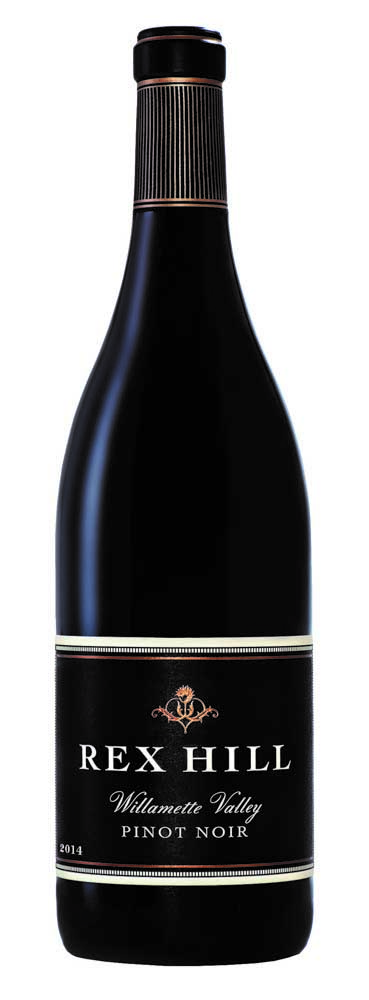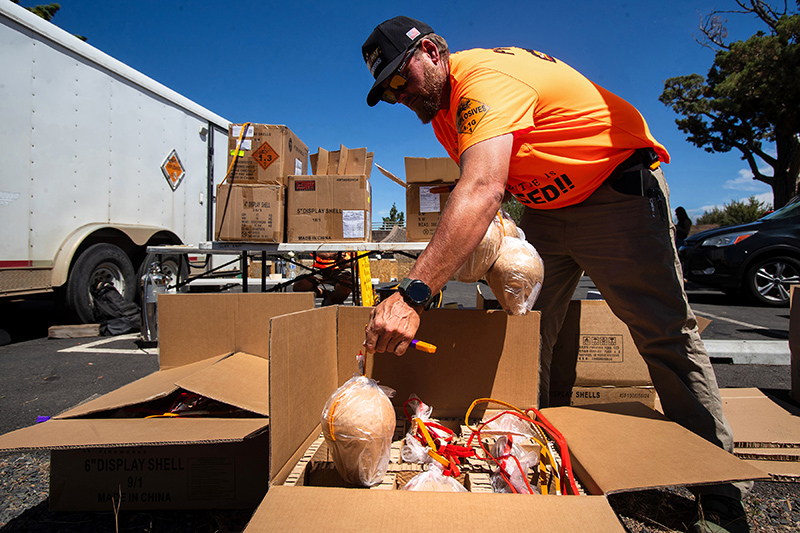Smoke gets in their vines
Published 3:53 pm Thursday, February 1, 2018

- The 2014 Rex Hill pinot noir ($30) can be counted upon to be free of smoke taint, although aficionados may discern an element of smoke in the palate. (Submitted photo)
To Robb Bell, owner of Cathedral Ridge Winery, “It’s a non-story.”
To Sam Tannahill, founding partner of Rex Hill Vineyards and director of viticulture at A to Z Wineworks, “It really is a downstream issue.”
And Andrew Rich, of Andrew Rich Wines, said his biggest concern is environmental loss.
The question posed was this: How will the heavy fire activity in Oregon forests this summer affect the 2017 vintage? The responses suggest that this state’s winemakers — even those in the Columbia Gorge — are not overly concerned.
With the harvest and crush of Oregon’s renowned pinot noir grapes taking place through September and October, it’s natural that wine lovers might have some concern about the effect of smoke on their favorite beverage.
Indeed, several years ago Applegate Valley wines inherited a distinct campfire flavor during an especially difficult year of wildfires in Southern Oregon. As it turned out, there were plenty of consumers who liked that.
Bree Boskov, a consultant to the Oregon Wine Board, noted that smoke taint can accumulate in the skin and pulp of a grape, and if released during fermentation “can cause unpleasant sensory characters of ‘ash tray,’ ‘medicinal,’ ‘campfire’ or ‘burnt,’ and reduces the varietal fruit aroma.” She added: “It is not known precisely how much smoke and for what length of time that smoke needs to be in contact with fruit to contribute taint.”
Steps to mitigate
But winemakers in the Willamette Valley — which produces 71 percent of Oregon’s wine grapes — and the Gorge suggest that won’t be a problem in Oregon this year.
“We’re excited about the 2017 vintage here in the Willamette Valley,” said Tannahill. “It is a great vintage so far, both in quantity and quality.”
The presence of smoke doesn’t sentence the wine to a smoky taste, Tannahill said. Laboratory analysis helps winemakers to define risks, he said, “so we can take steps to mitigate the smoke taint.”
“Our protocol and fermentation methods will not change due to the fires. Weather patterns like sun or no sun have the strongest effect on vintages. We pick when the fruit is ripe. The majority of the vineyards we work with (more than 60 throughout Oregon) have not been affected.”
Tannahill acknowledged that the smoke “could actually add a desirable taste.” But he said it could take six weeks from harvest to determine this. “It really needs the time to transition into wine before we’ll truly know,” he said. And he said if a smoky flavor is detected, “we have every reason to believe we can mitigate the taste.”
“The closer and sooner we can analyze the date, the better we can affect the product — and make changes upstream for both reds and whites.”
Beneficial effect
Bell, of Hood River’s Cathedral Ridge Winery, was much more directly affected by the Eagle Creek blaze, which continues to smolder in the Gorge. But he called fear of smoke taint “a non-story.”
“The effect of the fires may in fact have been beneficial,” Bell said. “The high overcast kept temperatures down here for 7 to 10 days.
“If the fire burns through your vineyard or comes up to the edge, and (the firefighters) spray water on it, then maybe you should be worried,” he said. “If they’re spraying, you get the cat-urine smell. But there was an instance a few years ago that fire burned up to within a quarter-mile of a zinfandel vineyard, and that was the best that winery ever made. It had a faint smoky bacon fat taste.”
Bell acknowledged that the fire was “well and truly scary. The canyons that run to the south off the Gorge were creating chimney flukes to the ridges. I suffered the anxiety of wondering if I was going to spend the rest of my days looking at charred timber to my west.”
But he said he hasn’t seen any evidence of smoke taint on any of the 29 varietals of grapes he sources from 17 different vineyards in Oregon and Washington.
“It could manifest itself later in the process,” he said. “But as a winemaker, you go with what nature serves up. Lay aside the smoke, and this was one of the best growing years in decades. Our early returns were abundant.”
Minimal impact
Winemakers at the Willamette Valley’s Carlton Winemakers Studio saw a light coating of ash on some grapevines in late August and early September. Still, they welcomed cloudy skies to keep sunburn off grapes. And Andrew Rich agreed that “I don’t expect (the ash) will have an impact on the wine.”
During a late-August drive through the Yakima Valley and Red Mountain American Viticultural Area, west of the Tri-Cities, Rich noted “the faint scent of smoke in the air.”
He didn’t think twice about it, he said, until he discovered Interstate 84 had been closed west of Hood River, “and I could see the fires burning the hillsides across the river.”
But he’s still convinced the wine will turn out fine. “In my 20 years of experience working with Washington grapes,” he said, “smoke taint has never occurred despite some relatively smoky years. Frankly, I’m more concerned about the criminal loss of the Columbia Gorge landscape.”
— John Gottberg Anderson can be reached at janderson@bendbulletin.com.
“Weather patterns like sun or no sun have the strongest effect on vintages. We pick when the fruit is ripe. The majority of the vineyards we work with (more than 60 throughout Oregon) have not been affected.”Sam Tannahill, founding partner of Rex Hill Vineyards








